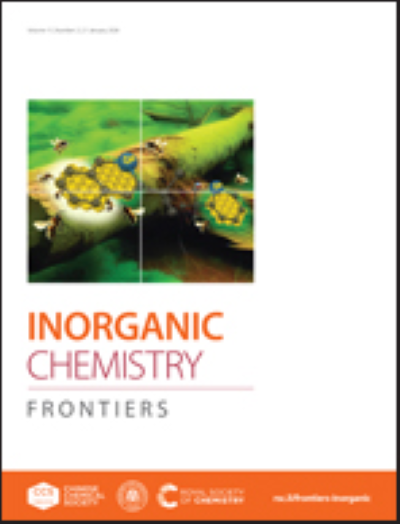Magnetic Field Enhances Interfacial Electron Redistribution to Promote Magnetoelectrocatalytic Hydrogen Evolution
IF 6.1
1区 化学
Q1 CHEMISTRY, INORGANIC & NUCLEAR
引用次数: 0
Abstract
The rational design of efficient and cost-effective electrocatalysts for the hydrogen evolution reaction (HER) presents significant challenges. Enhancing the overall performance of electrocatalytic reactions mainly focuses on optimizing catalytic materials and structures. Furthermore, the implementation of external magnetic fields may also effectively stimulate electron transportation. In this context, a novel method was introduced to enhance the HER efficiency of layered ferro-catalysts (Mo2C/Fe3C) by integrating intrinsic driving forces and non-contact field stimulation through both interface engineering and external magnetic fields. Experiments combined with theoretical calculations indicated that the built-in electric field (BEF) induced by the work function (WF) is beneficial to the redistribution of interfacial charge, thereby optimizing the Gibbs free energy of H*, which enhances HER activity. Moreover, the integration of an external magnetic field into the electrochemical system has been shown to enhance the catalytic performance further. A significant reduction in overpotential of approximately 25% was observed at a current density of 10 mA·cm-2 when subjected to a micromagnetic field of 50 mT, resulting in a decrease to 91 mV. The results show that the conductivity and interfacial charge transfer of ferromagnetic catalysts assisted by magnetic field are enhanced due to the negative magnetoresistive (MR) effect. Additionally, the Lorentz force facilitates the escape of hydrogen bubbles from the electrode surface, thereby contributing to the enhancement of reaction efficiency. This work presents a promising strategy for enhancing the catalytic activity of HER through the integration of electrical and magnetic stimuli.磁场增强界面电子重分布促进磁电催化析氢
合理设计高效、经济的析氢电催化剂是析氢反应的重要课题。提高电催化反应的综合性能主要集中在优化催化材料和结构上。此外,施加外磁场也可以有效地刺激电子输运。在此背景下,提出了一种新的方法,通过界面工程和外部磁场,将内在驱动力和非接触场刺激结合起来,提高层状铁催化剂(Mo2C/Fe3C)的HER效率。实验结合理论计算表明,功函数(WF)诱导的内建电场(BEF)有利于界面电荷的再分配,从而优化了H*的吉布斯自由能,提高了HER活性。此外,将外磁场集成到电化学系统中可以进一步提高催化性能。当施加50 mT的微磁场时,电流密度为10 mA·cm-2,过电位显著降低约25%,降至91 mV。结果表明,磁场辅助下铁磁催化剂的电导率和界面电荷转移由于负磁阻效应而增强。此外,洛伦兹力有利于氢气气泡从电极表面逸出,从而有助于提高反应效率。这项工作提出了一个有希望的策略,通过电和磁刺激的整合来提高HER的催化活性。
本文章由计算机程序翻译,如有差异,请以英文原文为准。
求助全文
约1分钟内获得全文
求助全文
来源期刊

Inorganic Chemistry Frontiers
CHEMISTRY, INORGANIC & NUCLEAR-
CiteScore
10.40
自引率
7.10%
发文量
587
审稿时长
1.2 months
期刊介绍:
The international, high quality journal for interdisciplinary research between inorganic chemistry and related subjects
 求助内容:
求助内容: 应助结果提醒方式:
应助结果提醒方式:


